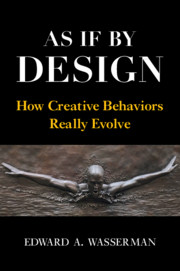Book contents
- As If By Design
- As If By Design
- Copyright page
- Dedication
- Contents
- Figures
- Acknowledgments
- Section 1 Introduction
- Section 2 The Vignettes
- Part I Sports
- Part II Medicine
- Part III Hygiene
- 13 Florence Nightingale
- 14 Taking Mental Floss to Dental Floss
- 15 A Very Close Shave
- Part IV Arts, Entertainment, and Culture
- Part V Is This Heaven? No, It’s Iowa!
- Section 3 Putting It Together
- Index
- References
15 - A Very Close Shave
from Part III - Hygiene
Published online by Cambridge University Press: 01 July 2021
- As If By Design
- As If By Design
- Copyright page
- Dedication
- Contents
- Figures
- Acknowledgments
- Section 1 Introduction
- Section 2 The Vignettes
- Part I Sports
- Part II Medicine
- Part III Hygiene
- 13 Florence Nightingale
- 14 Taking Mental Floss to Dental Floss
- 15 A Very Close Shave
- Part IV Arts, Entertainment, and Culture
- Part V Is This Heaven? No, It’s Iowa!
- Section 3 Putting It Together
- Index
- References
Summary
Levi Spear Parmly is hardly a household name. Yet, he is the documented inventor of dental floss. Writing in 1819, Parmly included waxed silken thread along with a small brush and polishing paste in his portable dental hygiene kit. The thread was to be slid through the gaps of the teeth and the arches of the gums to dislodge food matter that no brush could remove and is the source of tooth decay. Parmly’s focus on preventive dentistry was remarkable, given the primitive state of dentistry in his time. Yet, archeological evidence suggests that care of the teeth and gums preceded Parmly’s work. There’s even evidence that some of today’s nonhuman primates – specifically macaque monkeys – also floss their teeth. They use their own or others’ hair, fibers from coconut shells, plant needles, and feathers. So, the advent of flossing may actually predate our own species in evolutionary history.
Keywords
- Type
- Chapter
- Information
- As If By DesignHow Creative Behaviors Really Evolve, pp. 162 - 170Publisher: Cambridge University PressPrint publication year: 2021



